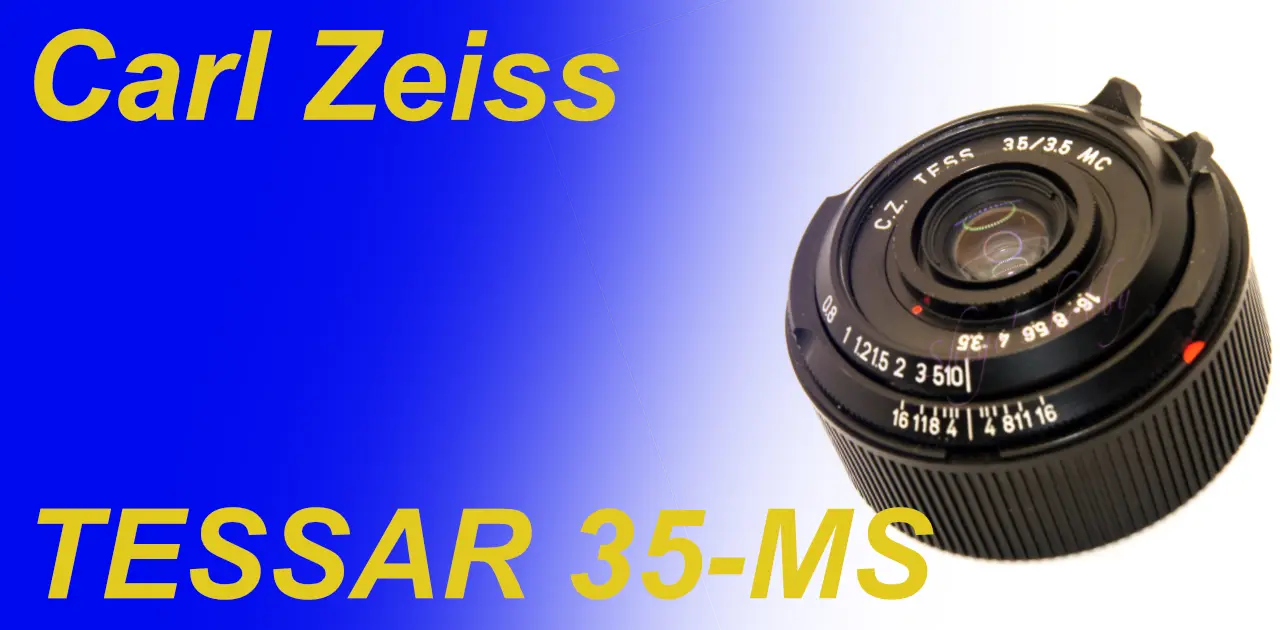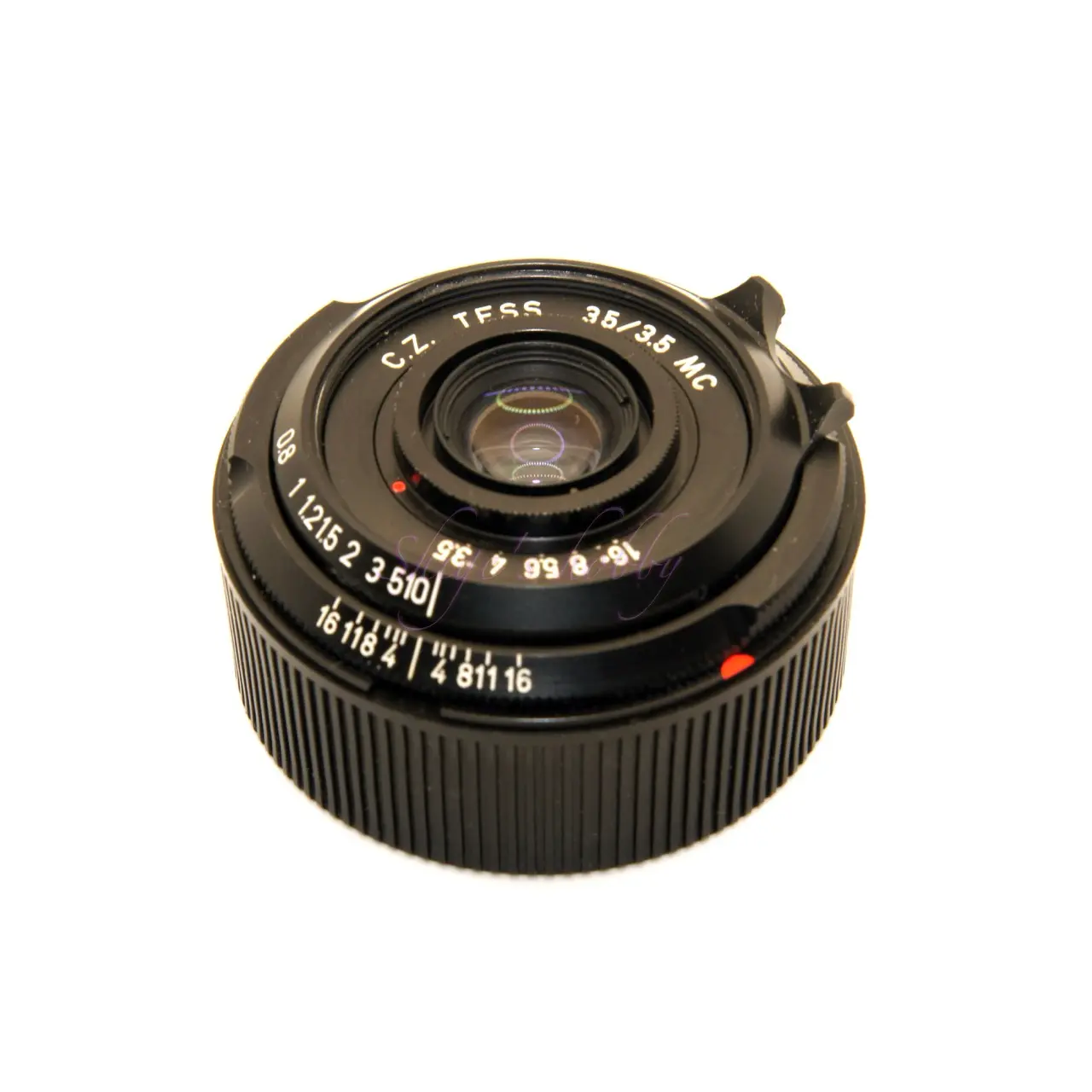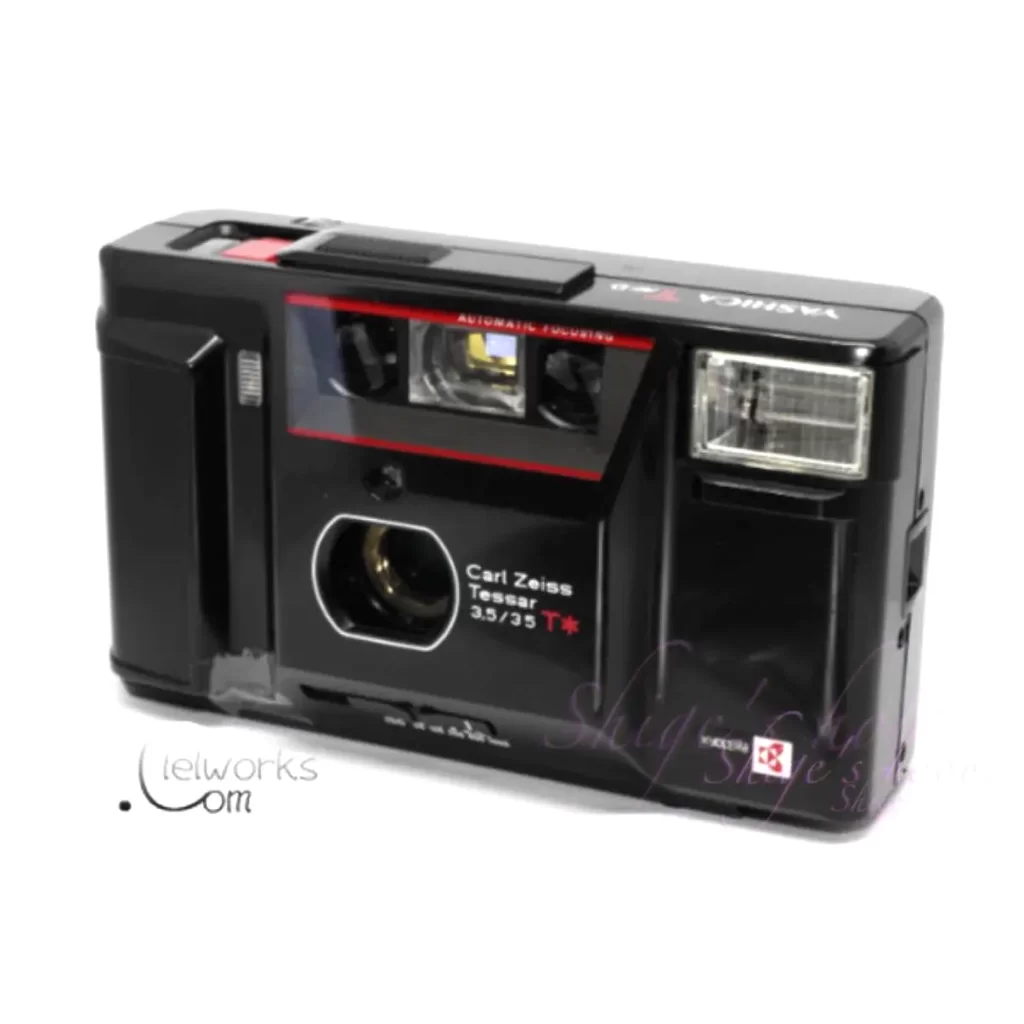Compact Tessar MS−C.Z TESS 35mm

Review and photo examples using MS-Optics C.Z TESS 35mm with a digital camera
Table of contents
Gallery
The photo example was taken with a Leica M-P.
Review


1.Overview
The C.Z.TESS 35mm F3.5 is a lens that uses the 3-group, 4-element Tessar format that was used on the film-era Kyocera compact camera, the Yashica T* (or Kyocera T* ).
The lens was modified by Ms-optics (Miyazaki Optical) by transplanting the lens removed from the camera to the Ms-optics common helicoid MS-35 and linking it to the rangefinder of a Leica M-type camera.
The main specifications are as follows, and details are listed in the table.
- Aperture value: 3.5
- Lens configuration: 3 groups, 4 elements
- Aperture blades: 10
- Minimum shooting distance: 0.6m
- Leica M rangefinder camera rangefinder linkage: 0.8m
Since this lens is a compact film camera lens, it is very compact even for an M-mount lens, and without the lens hood, it is 9mm thick and weighs 36g, which is a size and weight that is impossible for a lens in the 2020s.
The nameplate on the lens varies depending on when it was modified, with some saying “C.Z.TESS” like this lens, and others saying “FOR TESSAR”. The lens barrel is available in silver and black, the silver one is an older modification with an L39 mount, and the black one is a more recent modification with an M mount.
2.Usage
Even in this digital age, the C.Z.TESS 35mm F3.5 produces images that are sharp in the center, with only a little bit of peripheral vignetting.
When shooting blue skies with the LEICA M-P TYP240 or SONY NEX-7, which have older sensor designs, light entering the sensor at an angle can cause a purple color cast around the edges of the image.
Regarding these two drawbacks, peripheral vignetting is unavoidable to a certain extent due to the small diameter of the lens, so the photographer needs to be creative, such as accepting that the lens will cause peripheral vignetting and choosing scenes where the edges are blurred.
To avoid color casts, shoot in monochrome; shoot with a camera with a sensor that is less likely to cause color casts; or adjust the amount of sunlight entering the camera when shooting.
Also, the peripheral vignetting that occurs when adjusting the exposure to reduce the light around the edges makes the color cast less noticeable. Therefore, controlling peripheral vignetting when shooting makes it easier to shoot in color.
One drawback in terms of operation is that the aperture cannot be changed when a filter is attached. To deal with this, you need to decide whether to leave the aperture wide open or shoot only at the aperture value you have decided on.
When it comes to using lenses from old compact cameras, it is rare to find one that works with an M-mount rangefinder. Most of the modified lenses from Ms-optics are rangefinder-linked, which has the advantage of allowing for precise focusing, something that was difficult to do with compact film cameras.
3.Summary
In conclusion, the biggest advantage of the C.Z.TESS 35mm F3.5 modified lens is that you can use the lens attached to a film camera with the latest digital cameras.
As for the image quality, the sharpness of the center is acceptable even in the digital age, but the image quality of the peripheral area is not very good due to the possibility of color cast and image distortion. For this reason, it is more suitable for small sensors such as APS-C and Micro Four Thirds than for 35mm full-size sensors.
Ms-optics Compact Camera Modified Lens List
In addition to this lens, Ms-Optics has also transplanted lenses from compact cameras to the Leica M mount. As introduced on a separate page, Ms-optics has made a great contribution by making it possible to use lenses built into cameras with a Leica M mount. There are some restrictions on this modification, and it is limited to lenses that are fixed to the lens barrel and can be removed as is and installed in a different helicoid.
Lenses that cannot be modified include the RICOH GR1, GR21, and KONICA BIG MINI, and there are several cameras for which requests have been declined due to the difficulty of modification due to the lens structure.
Lens included with Retina
- Nikon Mini 28mm F3.5
- Nikon 35Ti, 28Ti
- Nikon Pikaichi lens
- Fuji Tiara 28mm F3.5
- Minolta Hi-Matic lens
- Yashica Electro 35 lens
- Kyocera T-AFD Tessar 35mm F3.5
- Contax T2
- Leica Minilux Summarit 40mm F2.8
Kyocera Yashica T AF-D
The Kyocera Yashica T AF-D (hereafter referred to as AF-D) is a 35mm film camera with a cheap plastic body and autofocus, so there is little room for the photographer to intervene.
According to the linked article on how to use the camera, “Kyocera Yashica T AF-D: Is it a Yashica or a Kyocera?”, the AF focusing accuracy is not good. This is thought to be the limit of the AF focusing accuracy of compact film cameras of this era.
The AF-D body with the lens removed was included when I purchased the camera, so I have never used it as a film camera. The previous owner either broke the camera or gave up using it with film, so he asked Ms-optics to modify it, and it is now in its current form.
So, for some reason, I bought one that had been sold and ended up at a used store.
Until I went to the used store to see the actual thing, I never imagined that an AF-D body only would come with it.
When you send a camera to Ms-optics for modification, the body will be returned to you without the lens removed unless you tell them that you are disposing of the unwanted body.
When I asked Ms-optics directly to modify a Summarit attached to a Leica Minilux to an M mount, they returned the Minilux body, which I still have in my possession. For many users, the body without the lens is practically trash, so it is inevitable that it will be thrown away.

Specification
This lens was mounted on a 35mm film camera using the Tessar format with four elements in three groups.
The lens uses Ms-optics’ common helicoid MS-35 as its helicoid.
| Item | Value | note |
| focal length(mm) | 35 | |
| Maximum aperture | 3.5 | |
| Minimum aperture | 16 | |
| Lens configuration | 3groups 4elements | Tessar Type |
| Minimum distance(m) | 0.6 | Works with the camera’s rangefinder from 0.8m to infinity. |
| Lens length(mm) | 9 | |
| Lens max diameter(mm) | 48.7 | |
| Filter diameter(mm) | 34 | |
| Weight(g) | 36 |
Reference links
- Yashica T AF specifications and other information on the Yashica T AF website.
- ZEISS TESSAR description page by Wikipedia
Update history
- 2024.10.3
- 2024.02.15:Update the article
- 2022.01.18:First draft

Leave a Reply